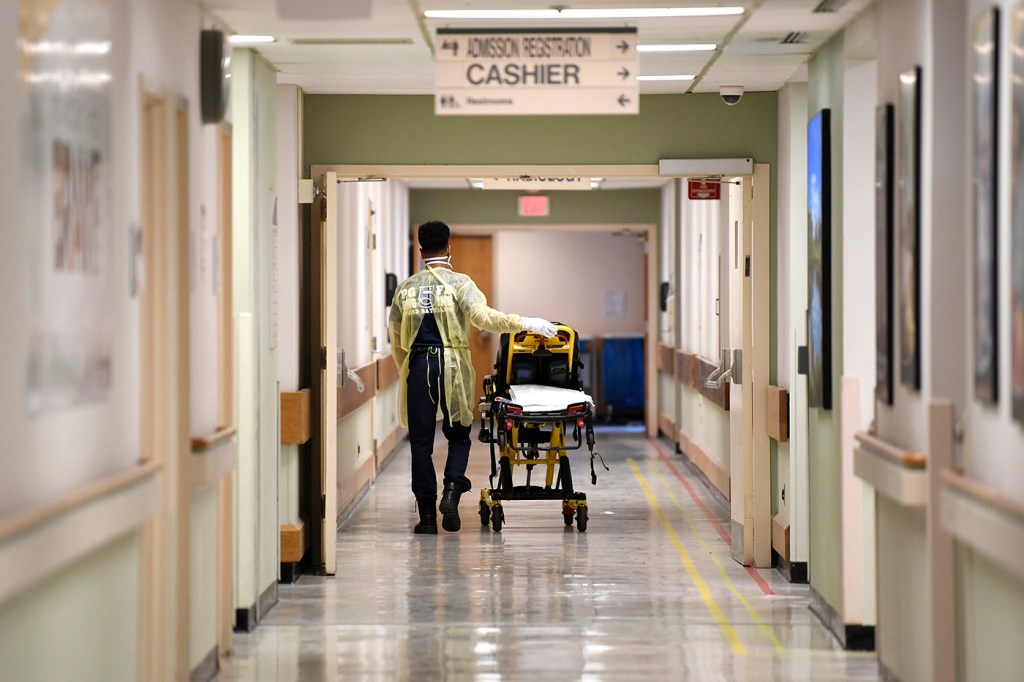Disease surveillance leaves out the communities that need it most

As the current COVID-19 crisis has made abundantly clear, public health agencies need reliable, up-to-date information to effectively address evolving health problems at local, state, and federal levels. Many agencies in the U.S. are looking to disease surveillance systems that incorporate hospital records and internet-sourced data to predict where and when the worst outbreaks will be.
But, according to a recent study, these surveillance systems are leaving out the most vulnerable individuals. People living in impoverished neighborhoods, where there is less access to healthcare, are not being accounted for.

Samuel Scarpino is an assistant professor in Northeastern’s Network Science Institute. Photo by Adam Glanzman/Northeastern University
“We get most of our data from the healthcare system,” says Samuel Scarpino, an assistant professor in Northeastern’s Network Science Institute and lead author on the study. “And so we are largely unable to understand what’s going on in these most at-risk communities.”
Scarpino and his colleagues had set out to build a forecasting model, using data from the Dallas-Fort Worth region of Texas, that could predict the number of people that would need to be hospitalized with severe cases of flu one week in advance. Their model worked well, but not for everybody.
Despite incorporating the data from emergency room visits for upper respiratory tract infections, visits to primary care providers for influenza-like illness, and Google search trends for terms associated with signs, symptoms, and treatment of the virus, the researchers couldn’t capture what was going on in communities where large sections of the population had household incomes below the federal poverty line.
“When we try to forecast those inpatient hospitalizations, we really cannot build an accurate forecasting model for those 25 percent of zip codes that are in the lowest socioeconomic bracket,” Scarpino says. “And these communities are the most at risk, because they have the highest hospitalization rate.”
People in the most impoverished communities in the region, where between 21.2 percent and 48.1 percent of households live below the federal poverty level, were hospitalized for the flu at roughly twice the rate of people in more affluent communities. Which isn’t surprising, Scarpino says. People living in poverty tend to have worse health outcomes, higher levels of chronic disease, and shorter life expectancies than those in higher socioeconomic brackets.
Still, the researchers expected to be able to predict these hospitalization rates using data from emergency departments, assuming that people without health insurance would enter the hospital system through emergency rooms. That turned out to be not the case.
“There’s this prevailing wisdom that individuals in low-income households use the emergency department as their kind of primary health care provider,” Scarpino says. “But these emergency departments don’t really see as much of a percentage of individuals in these low income brackets as I think people expected.”
People in impoverished communities may avoid seeking healthcare because of the cost, so reports from emergency departments only show the most severe cases. Additionally, about half of inpatient hospitalizations in the U.S. don’t come through emergency rooms, Scarpino says, which means those cases aren’t being counted in the data used to forecast flu or other outbreaks.
Individuals with limited or no healthcare aren’t seeing a family physician when they get sick. They probably aren’t searching Google for answers. And only a small portion show up at emergency rooms. And because of that, they are being overlooked by a system that should be helping them.
“The model is completely unable to provide any benefit or value to these individuals,” Scarpino says. “It’s often the individuals who are the most vulnerable, the most at risk, that we have the least amount of information around.”
Ensuring that these individuals are represented in health data is a way to give them a voice, Scarpino says. For public health agencies and policymakers to support low-income communities, they need to understand the problems those communities are facing.
“We don’t know what we need to be providing to these communities, but we can tell by the hospitalization rates that we should be providing more,” Scarpino says. “In some ways, they’re disempowered by the fact that the data is not there, in the hands of the government, so that it’s harder to ignore the needs of these groups of people.”
But before we rush out to collect data on at-risk communities, Scarpino says, we need to carefully evaluate how that information will be used.
“One of the concerns around increased health surveillance in at-risk communities is that there’s lots of other ways that those data could be abused,” Scarpino says. “Often part of the reason that they’re underprivileged or at risk is because of structural biases in our society that might be exacerbated if there were more data available on these communities.”
For media inquiries, please contact Marirose Sartoretto at m.sartoretto@northeastern.edu or 617-373-5718.





